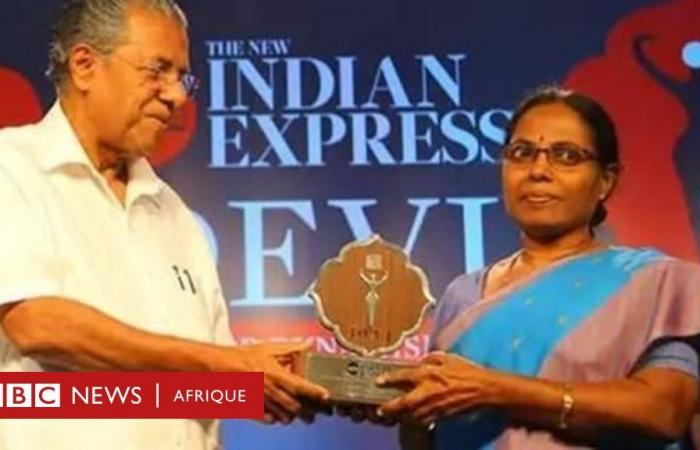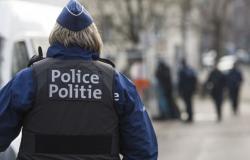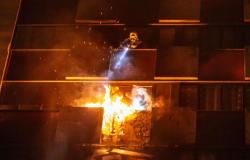
Photo credit, ARCHIVES PERSONELLES
- Author, Swaminathan Natarajan
- Role, BBC World Service
-
6 hours ago
Warning: this article contains descriptions that may be considered offensive
Dr. Shirley Vasu, 68, has won several awards for her pioneering work, but her family still doesn’t like hearing many details about her career.
For three decades, Vasu examined the bodies of people who died suddenly, violently or suspiciously.
She was the first forensic pathologist for the southern Indian state of Kerala, home to more than 33 million people.
It’s a particularly unusual story in this part of India, where cultural stigma around death means women generally avoid crematoriums.
The doctor has performed approximately 20,000 autopsies – from embryos to people approaching 100 years old – and has faced death at all stages of life.
But many of the doctor’s memories seem to fit better in a detective novel than a medical book.
The first case
Vasu’s first experience examining human remains took place when he was a graduate student in 1981.
At the time, his professor asked him to examine a skull and arm bones found 13 meters underwater, under a waterfall.
“The bone had lost all its biological content,” recalls the doctor.
With two other students, observing how the skull was connected to the vertebra, she discovered that the victim was a man.
The team estimated that the deceased was 14 or 15 years old.
“The arm bones showed several different cuts, appearing to be an attempt to mutilate the body,” she wrote at the time. “It was murder.”
Vasu didn’t have a camera back then. So she took the bones to a photography studio and placed them on a table so a photographer could document them.
However, upon seeing the remains, the terrified photographer called the police. Vasu had to act to avoid falling under suspicion.
The victim was later identified as a boy who had gone missing 41 days earlier. The main suspect in the murder was his 18-year-old cousin – but no one was ultimately convicted of his death.
What happens during an autopsy?
Photo credit, Getty Images
The purpose of an autopsy is to determine the time and cause of death – and who the person was, if that is not known.
Vasu joined the forensic department of the Kozhikode Municipal Hospital in 1982 and conducted two to three 90-minute post-mortems a day. On a busier day, I would perform up to seven autopsies.
She regularly examined burned, mutilated, rotted, crushed, severely disfigured and even exhumed human remains.
The doctor explains that the first step was an external visual examination to look for “injuries, marks and worrying findings.”
This was followed by an internal examination of the chest, abdomen, pelvis and organs. Tissue samples were taken for examination.
Then, finally, the skull was opened to inspect the brain.
If a person had been hit by a weapon, a full-body X-ray was taken to locate the bullets.
If the deceased had tuberculosis or radioactive implants for cancer treatment, two doctors would share the work to reduce the risk of exposure.
Vasu also recalls seeing one or two cases every year where a family member convinced others, including children, to participate in a mass suicide.
“It’s part of our job,” she says.
After a long pause, she adds: “We feel sad when we see the bodies of children.”
Clandestine abortions
While working in Kozhikode in northern Kerala, Vasu noticed an increase in the number of deaths among young pregnant women.
Unusual findings during their autopsies led Vasu to suspect that the deaths were due to clandestine abortions.
The young women were found to have died from painful uterine sepsis.
A group of retired assistants from the gynecology department of the hospital where Vasu worked were later caught performing abortions at their homes, using stolen equipment. Ultimately, six elderly women were arrested.
But autopsies can also help determine whether there was a crime.
The pathologist clearly remembers one man’s fear of being investigated as a suspect in the death of his 98-year-old mother who fell out of bed.
The post-mortem carried out by Vasu confirmed that the death was an accident.
“A simple fall can be fatal for young children, as well as for the elderly,” says the doctor.
“She fell at an angle that severed the connection between her brain and spinal cord.”
Body eaten by a tiger
In the late 1980s, Vasu and another doctor went to the Wayanad Tiger Reserve, about 110 km from Kozhidoe, to conduct an autopsy on the remains of a woman attacked by the animal.
Only his head and neck were intact.
In the scene, it appeared that the woman tried to hang herself from a tree with her saree and fell, thereby falling prey to the tigers after the saree broke.
But an examination of the body revealed that it was not a suicide.
“The killer staged the death in such a way that it looked like the woman had hanged herself,” the doctor recalls.
“In a high suspension, the brand is significantly different. This was clearly a case of strangulation. »
It turned out that the culprit had strangled the victim, then tore her sari, climbed the tree and tied it to a branch.
Police linked the death to the disappearance of two people. Investigators then found the killer.
Photo credit, Getty Images
Several deaths
Even if a tragedy like a natural disaster or a car accident causes multiple deaths, each case must be investigated separately.
“For the pathologist, there is no mass catastrophe,” says Vasu. “A pathologist must address the unique situation that a particular person was facing.”
In June 2001, a train derailed and fell into a river in northern Kerala, killing 59 people. Initial reports attributed the deaths to drowning.
But when Vasu and his team conducted autopsies, they found that only one death was caused by drowning. Others suffered head injuries and were crushed by luggage and debris.
The same year, a bus caught fire and killed 44 people in Malappuram, about 50 km southeast of Kozhikode. Most of the bodies were charred, and at the time Vasu did not have access to technology to make DNA-based identification.
“We use physical characteristics such as body shape and personal effects such as watches, chains, shoes, clothing and bags to identify victims,” she recalls.
Autopsies also revealed other forms of identification, such as metal plates and evidence of previous surgeries.
“One of them was an exceptionally tall man who wore a pendant from a famous Krishna temple,” Vasu recalls.
“His stomach was full of undigested biryani.”
The deceased’s friends later confirmed that they had eaten biryani together, which led to his identification.
Technological improvements
Photo credit, AFP
Vasu has seen great technological improvements during his 34-year career.
In the past, she used to see formaldehyde, which we now know can be toxic, kept in open trays for fumigation purposes.
“We now have ultraviolet rays to kill germs,” she says. “The medical examiner’s offices now have cross ventilation and air quality monitoring. »
Methods for storing corpses have also improved, slowing decomposition.
Vasu is optimistic about emerging technologies.
“Singapore and Japan are already moving towards virtual autopsies, carried out without knives and without blood,” she says.
The bodies are scanned by a scanner and “doctors examine every layer of the body, from the skin to the bones.”
Exhausting work
Photo credit, PERSONAL ARCHIVES
The doctor performed his last autopsy in 2014 and retired in 2016.
She now teaches at a private medical school.
Although she is satisfied with what she has accomplished, she says she is happy to have evolved. She recognizes that working with corpses triggers negative emotions.
“I don’t want to go any closer to a morgue,” says the pathologist. “It allows you to release all your energy.”
Vasu didn’t like to eat full meals between autopsies, so she relied on chocolates to keep her brain functioning during the day.
In southern India, places associated with death are highly stigmatized.
Upper caste women do not usually go to a crematorium, but they do participate in some funeral rituals.
Vasu built a bathroom outside his house and would take a shower before entering the residence after work.
Although her husband is also a doctor, she says “he’s too scared to talk” about what the doctor saw, and her children also avoid asking her questions about her career.
Although both his sisters were judges and Vasu testified before them in court, they also never asked “anything about autopsies outside the witness box.”
The forensic pathologist says working with the dead has definitely shaped her perspective.
“Being in the morgue humbles you,” she says. “You have no arrogance. You aspire to live a clean life.”





